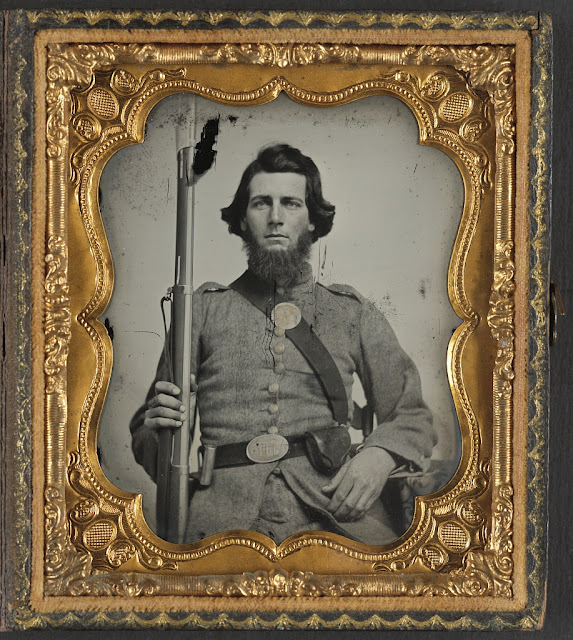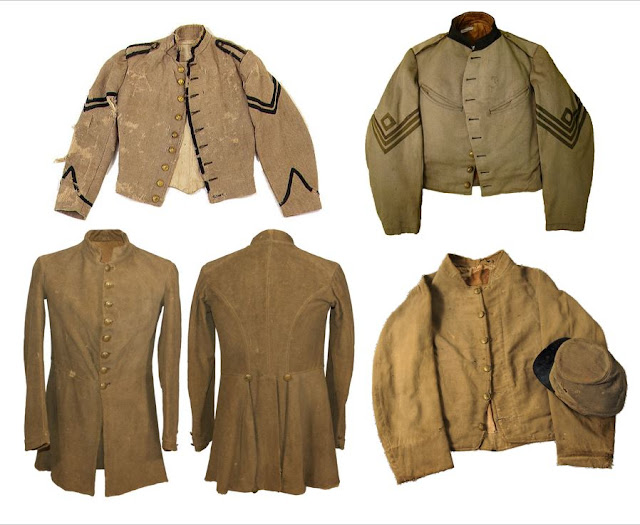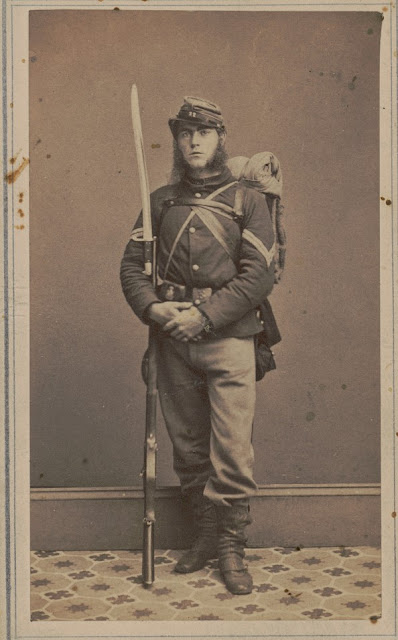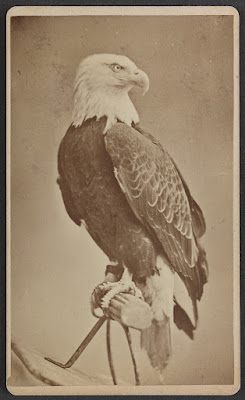Ready for more fighting if necessary: Freeman’s Ford to Chantilly with the 21st Georgia
The last week of August 1862 may have been the busiest in the history of the 21st Georgia Infantry's history during the Civil War. The Georgians fought in five separate engagements over the course of a little more than a week: Freeman's Ford on August 22nd, Manassas Station in the early morning hours of August 27th, Groveton on the evening of the 28th, Second Bull Run throughout August 29th and 30th, then Chantilly on September 1st.
The engagement at Groveton on the evening of August 28th against a portion of the Iron Brigade of the Army of the Potomac was a particularly hard fight for the regiment. "We carried 240 men into the engagement and advancing with our brigade, some became hotly engaged," one veteran recalled. "Onward we went to a fence, the enemy falling back before us. Whilst fighting here under a heavy crossfire, our regiment and the 21st North Carolina suffered unusually. Owing to some mistake, the 15th Alabama and 12th Georgia to our left were kept from firing and the enemy’s whole force became directed at us. Reinforced by the 26th Georgia and 61st Georgia of Lawton’s brigade, we charged across the fence, driving the enemy before us under appalling losses to ourselves. The enemy having retired to the woods and complete darkness now prevailing, we fell back to the fence when, after a few volleys, the firing ceased on both sides. Our loss on the memorable night of the 28th of August was very heavy as will be seen from the list of killed and wounded. We carried 240 men into the engagement and our wounded were so numerous that not more than a sixth of the regiment escaped unscathed."
This account of the Second Manassas/Bull Run campaign, penned by an unknown soldier in the 21st Georgia, first saw publication in the September 25, 1862, edition of the Atlanta Southern Confederacy.
 |
| This image from the Liljenquist Collection depicts a private soldier wearing a Georgia state seal belt buckle. |
Frederick City, Maryland
September 9, 1862
The numerous
friends of the 21st Georgia are doubtless anxious to know something
of its engagements and losses in the recent battles and I propose to supply
this information to some extent.
We moved with
our brigade (Trimble’s of Ewell’s division) from the Rapidan River when our
army under Lee commenced its forward movement and arrived at Freeman’s Ford on
the Hazel River. Here on the 22nd of August, we had a heavy skirmish
with the enemy who, in considerable force, had crossed and were about to attack
some portions of the army train. They had several brigades and a battery in
position.
Our brigade, consisting of the
15th Alabama, 21st North Carolina, and our regiment under
our gallant general, deployed skirmishers and advancing in line of battle, we
drove them over the river, killing and wounded a large number and causing them
to fire their own trains on the other side. We killed, according to their
newspaper accounts, the general commanding and, but for the river, would have
carried their battery. Having accomplished our purpose and having no artillery,
we fell back to our original position. (To learn more about the fight at
Freeman’s Ford from the Federal perspective, please check out “Standing Like
Pillars of Adamant: The 61st Ohio at Freeman’s Ford.”)
Next day we commenced the great
flank movement through Thoroughfare Gap and on the night of the 26th,
after a toilsome march, arrived at Bristoe Station seven miles below and south
of Manassas Junction where our division captured two trains of cars and many
prisoners. Already we had marched 20 miles that day but about 11 p.m. we
commenced a forced march to Manassas Junction in company with the 21st
North Carolina, the two regiments under General Isaac Trimble. Arriving at
Manassas at 12:30 that night without cavalry or artillery support, and, finding
that the enemy was expecting us as their pickets fired into us, we formed in
line and advanced into the village.
We had a short and quick
engagement, the enemy opening on us with musketry and artillery. Fortunately,
the darkness favored us and on we pushed, the 21st North Carolina on
the right and ours on the left. Becoming separated by a long line of cars, our
movements were somewhat independent of each other. The conflict was short and
decisive. Our regiment took three pieces of artillery and some 50 prisoners in
the charge, including a lieutenant colonel, three captains, an adjutant, and
three lieutenants. The 21st
North Carolina gallantly took two pieces of artillery during their charge. An
immense amount of stores, long trains loaded with goods of all kinds, sutler’s
goods, and supplies for Pope’s army all fell into our hands. This achievement
will ever be regarded by the 21st Georgia as one of its proudest.
Our loss was very slight, considering the enemy had artillery in position
besides their infantry.
We stood sleepless all night as
the campfires of the enemy were close around us and we learned from our
prisoners that they were in large force and much nearer us than our own
friends. The sound of their artillery moving near us during the night also
apprised us of our danger. It is attributable to darkness and their utter
surprise at our achievement that we were not attacked. Early the next morning,
they were already advancing on us and shelling us when our division and the
other troops arrived. We stood at rest in one of the old nooks and saw the
battle of that day including the magnificent cavalry fight between Stuart and
the enemy’s cavalry. (For a Federal perspective of that fight at Manassas
Junction on August 27, 1862, please check out “Great Expectations Dashed: The Kanawha Division Meets the Army of the Potomac at Manassas Station.”)
The next day, by crossing Bull
Run at the bridge and again at the Stone Bridge, we arrived near Groveton on
the identical ground where we drilled one year ago and at nightfall became
engaged with Milroy’s forces. We carried 240 men into the engagement and advancing
with our brigade, some became hotly engaged. Onward we went to a fence, the
enemy falling back before us. Whilst fighting here under a heavy crossfire, our
regiment and the 21st North Carolina suffered unusually. Owing to
some mistake, the 15th Alabama and 12th Georgia to our
left were kept from firing and the enemy’s whole force became directed at us.
Reinforced by the 26th Georgia and 61st Georgia of Lawton’s
brigade, we charged across the fence, driving the enemy before us under appalling
losses to ourselves. Here Captain Buck Waddail [Joseph F. Waddail] fell dead
while Lieutenant [Thomas F.] Attaway of Co. B fell mortally wounded. Amongst
the foremost slain was Lieutenant Adderhold of Co. A.
The enemy having retired to the
woods and complete darkness now prevailing, we fell back to the fence when,
after a few volleys, the firing ceased on both sides. Our loss on the memorable
night of the 28th of August was very heavy as will be seen from the
list of killed and wounded. We carried 240 men into the engagement and our
wounded were so numerous that not more than a sixth of the regiment escaped
unscathed. (To learn more about the fight at Groveton, please check out these
three posts from the Iron Brigade: “How the Iron Brigade was Wrought" (2nd
Wisconsin), "A Baptism at Groveton" (19th Indiana), and “I Don’t Thirst for More Fight” (6th Wisconsin).
On the 29th, Major [Thomas
C.] Glover, with the fragments of the regiment, fell into line and in the
skirmish of the morning where General Trimble was wounded, he was present. Detailed
in the afternoon to bury our dead, we were unengaged anymore that day. On the
30th, we rejoined our brigade. Not numbering more than 40 men, we
took part in the brilliant success of that day and with our brigade sustained
and repelled the shock of three lines of battle thrown on our position with
great energy and determination by the enemy. The dead on all the fields in
which we had been engaged illustrates our fighting. At the close of this fight,
the enemy was in full retreat. Our losses had been very heavy and most of the
regiment was scattered in all directions, wounded and suffering for medical
attention. Major Glover was detailed by General Lawton as a physician to attend
them temporarily and leaving the command with Captain [William M.] Butt of Co.
A, he went on his mission on the 31st.
The little command again moved with the division to intercept the enemy between Centreville and Fairfax. Near Chantilly, we were engaged again on the evening of September 1st. Our loss was not many, but the lamented Captain Butt fell here. Since then, we have not been engaged but have crossed the Potomac and are now at Frederick, Maryland, a good deal recruited in numbers and ready for more fighting should it be necessary. Major Glover rejoined us at Leesburg.
Source:
Letter from unknown soldier in 21st Georgia
Infantry, Atlanta Southern Confederacy (Georgia), September 25, 1862,
pg. 2











Comments
Post a Comment